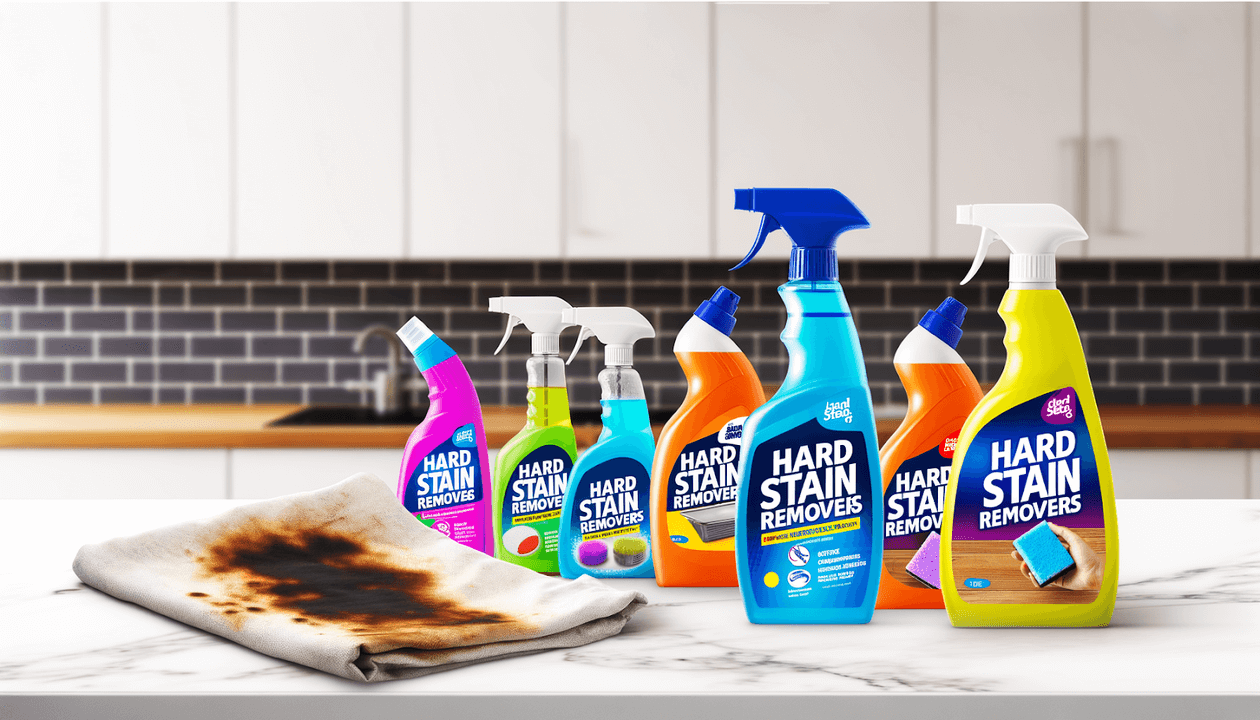
The Science Behind Hard Stain Removers: How They Work to Eliminate Tough Marks
G’day! Ever found yourself staring down a stubborn stain, wondering how exactly those hard stain removers do their magic? You’re not alone. Whether you're dealing with spills on your favourite outfit, marks on your countertops, or smudges on tiles, understanding the magic behind these products can help you choose the right one and maybe save some time—and sanity. Let's dive into the science behind these tough stain busters and get you sorted.
Types of Hard Stain Removers
Not all stains are created equal, and neither are the removers. Let's break down the different types and give you the lowdown on which to use when the situation gets grimy.
Laundry Stain Removers
Clothing cops a fair bit of abuse in the stain department, so your laundry's arsenal should be ready for anything.
Spray Stain Removers
Sprays are your go-to for convenience. These bottles of brilliance rely on surfactants or emulsifiers to surround those pesky stain molecules, lifting them away from fabrics. Perfect for your not-so-serious stains like chocolate and butter. Who knew being biodegradable and pH-neutral could be so effective at keeping peace with the planet and your pets?
Powdered Stain Removers
When stains get rough, these heavyweights don’t mess about. Versatile enough to be used as a pre-treatment or tossed into the wash, they excel at combatting stubborn stains like red wine and grass. Just a touch messy when mixed with water, but worth the hassle for a thorough clean.
Gel and Brush Applicators
For set-in stains, products with a built-in brush are lifesavers. Using enzymes or oxidizers, they break down stain molecules for a more manageable clean-up. Sometimes getting hands-on is the best approach.
Surface Stain Removers
Hard surfaces like tiles or countertops demand a different breed of stain fighters.
Tile and Countertop Stain Removers
Maintaining surfaces requires specialised solutions. For tiles that are sealed, you'll want something that cleans and seals, like hydrogen peroxide blends. These conquer hard water stains without dulling your surfaces. Unsealed tiles? Deep penetrating cleaners dive right into pores to evict those sneaky stains.
Cultured Marble Stain Removers
When it comes to cultured marble, tread lightly. You need removers specifically tailored to this material to avoid damage. Steer clear of abrasive scrubs and acidic cleaners if you want your marble to stay in tip-top shape.
How Stain Removers Work
Knowing how these products tick can save sweat and tears—not to mention ruined clothes or surfaces.
Lift and Rinse
Thanks to surfactants, stain removers get fabrics or surfaces nice and slippery, making it easier to release and rinse away stain molecules. Just the ticket for greasy offenders like oils and butter.
Dissolve Stains
Solvent-based removers work by the principle of "like dissolves like." Water-based stains respond well to club soda, while oily variants may need a splash of rubbing alcohol for full elimination.
Break Down Stains
Enzymes or oxidizers target protein-based stains like an attack squad, breaking them into smaller bits for an easy wash away. This is where chlorine bleach or peroxide often plays the hero role.
Bleach Stains
Whitening agents are a 'hide 'n' seek' method of stain removal. They don’t physically remove stains but instead make them less visible through oxidation or light reflection tricks.
Application Methods
The method of application can often be the deciding factor in how effectively a product works.
Spray Application
Super handy and straightforward, spray applications are best for small and light stains. More often than not, they’re biodegradable and odourless, perfect for a quick spritz before rinsing or laundering.
Powder Application
These powders can be chucked straight into the wash or used for pre-treating. Fussier stains might benefit from soaking in a watery concoction of powder for a real deep clean.
Gel and Brush Application
With built-in brushes, gel removers get applied directly, then work into the fabric’s fibres. For tough, ingrained stains, this method can really save the day.
Pen Application
On-the-move solutions like pen removers require a bit of blotting and light rubbing. They're ace for fresh, petite stains, but won't stand up to bigger or ingrained issues.
Safety and Precautions
Treat these products with respect and follow safety instructions to avoid any mishaps.
Skin and Eye Protection
Always kit out with gloves and eye protection when handling these chemicals. If they do get on your skin or in your eyes, a good wash with soap and water is vital. And head to the doc if you’ve got any lingering discomfort.
Ingestion
If consumed, get to the poison control centre or ring a doc right away. And unless directed by medical folk, don’t try to vomit it out.
Disposal
Dispose of these products per the packaging instructions, ensuring they reach approved facilities for safe management.
Conclusion
As you’ve learned, the art of knocking out hard stains isn’t wizardry, but knowing your weapons and how they work makes all the difference. From picking the right remover for your specific stain and surface to applying it correctly, it’s all about strategy. When done right, even the nastiest of stains won’t stand a chance. Best of luck with your cleaning battles, mate!
